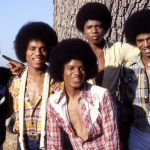Rainy Day Women #12 & 35 – Bob Dylan

“Rainy Day Women #12 & 35” by Bob Dylan is a provocative and iconic song that epitomizes the spirit of the 1960s counterculture. Released in 1966 on the album Blonde on Blonde, this track stands out for its unconventional structure, playful lyrics, and bold musical experimentation. This essay explores the musical composition, lyrical content, and cultural impact of “Rainy Day Women #12 & 35.”
The musical composition of “Rainy Day Women #12 & 35” is characterized by its distinctive blend of rock, blues, and carnival-like instrumentation. The song opens with a rollicking brass band introduction that sets a festive and celebratory tone. The infectious rhythm, driven by a steady beat and lively piano, creates a sense of movement and spontaneity. Dylan’s gravelly vocals, accompanied by a chorus of raucous background singers, add to the song’s irreverent and rebellious atmosphere.

Lyrically, “Rainy Day Women #12 & 35” is known for its enigmatic and cryptic verses. The recurring refrain, “Everybody must get stoned,” has been interpreted in various ways, ranging from literal drug use to metaphorical stoning or criticism. Dylan himself has commented that the song was intended to provoke thought and challenge societal norms. Lines such as “They’ll stone you when you’re trying to be so good / They’ll stone you just like they said they would” suggest a critique of hypocrisy and judgmental attitudes.

The song’s title, “Rainy Day Women #12 & 35,” adds to its mystique and ambiguity. Some interpretations suggest that the numbers 12 and 35 refer to Biblical verses that discuss judgment and punishment, while others speculate that they may relate to personal or historical references known only to Dylan. This ambiguity invites listeners to engage with the song’s meaning on multiple levels, contributing to its enduring appeal and fascination.
Culturally, “Rainy Day Women #12 & 35” became a symbol of the 1960s counterculture and its spirit of rebellion and nonconformity. The song’s playful and irreverent style challenged traditional musical norms and pushed boundaries in both lyrics and sound. Its unconventional structure and provocative themes resonated with a generation seeking to question authority and explore new ideas.

The song’s impact extended beyond its initial release, influencing subsequent generations of musicians and artists. Its bold experimentation with genre and instrumentation inspired artists to push the boundaries of popular music and explore new avenues of expression. “Rainy Day Women #12 & 35” remains a testament to Dylan’s ability to provoke thought and stir emotions through his music, solidifying his reputation as one of the most influential artists in rock and folk history.

In conclusion, “Rainy Day Women #12 & 35” by Bob Dylan is a groundbreaking and influential song that encapsulates the spirit of the 1960s counterculture. Its bold musical composition, enigmatic lyrics, and cultural impact have secured its place as a timeless classic. The song’s ability to provoke thought and challenge norms continues to resonate with listeners, making it a defining work in Dylan’s extensive and acclaimed discography. “Rainy Day Women #12 & 35” remains a powerful example of music’s capacity to inspire change and provoke thought, ensuring its enduring relevance and significance.











